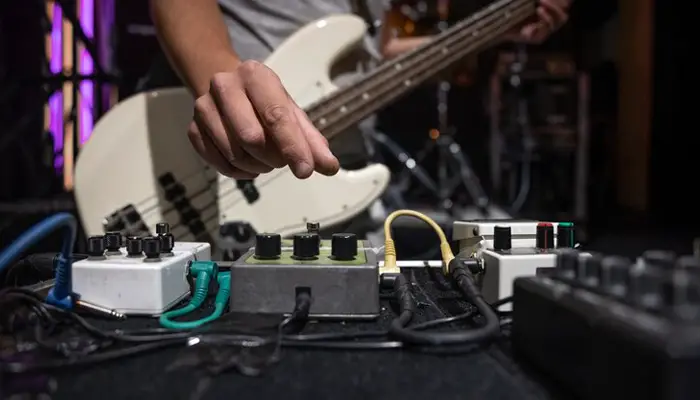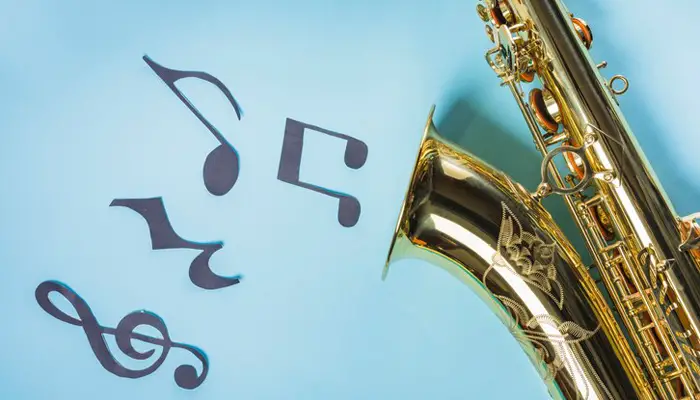
Do you want to learn how to play djembe? If so, you’ve come to the right place!
In this step-by-step tutorial, we will teach you everything you need to know about how to play this amazing percussion instrument.
We’ll start with the basics, such as learning how to hold the djembe and make basic sounds. Then, we’ll move on to more advanced techniques such as playing rhythms and soloing.
Are you ready to get started? Let’s go!
What Is a Djembe?
The djembe is a percussion instrument that originated in West Africa. It is typically made from wood and goat skin, and it is played with the hands.
The djembe has a rich history and tradition, and it is used in many different types of music. For example, you might hear a djembe being played in a traditional West African folk song, or in a modern pop song.
No matter what type of music you’re playing, the djembe is an essential part of any percussion section.
How Are Djembes Made?
Djembes are typically made from wood and goat skin. The wood is usually carved into a specific shape, and the goat skin is stretched over the top of the wood.
Once the skin is in place, it is tightened with ropes or cords. This process can be very time-consuming, but it is essential in order to create a good-quality djembe.
What Types of Sounds Can Djembes Make?
Djembes can make a variety of different sounds, depending on how they are played. The most basic sound is called the slap, and it is created by slapping the skin of the drum with your hand.
You can also create a sound called the bass by striking the center of the drum with your palm. The sound of the bass is lower and deeper than the slap.
If you strike the edge of the drum with your fingertips, you will create a sound called a tone. The tone is higher and sharper than the slap or bass.
You can also create a variety of other sounds by varying the way you play the djembe. Experiment and see what sounds you can create!
How to Hold a Djembe
The first thing you need to know about how to play djembe is how to hold it properly. The djembe should be held with both hands, and it should be positioned so that the drum is in front of your stomach.
Your dominant hand should be holding the drum at the base, and your other hand should be positioned higher up on the drum. This will allow you to create different sounds with each hand.
How to Play the Djembe: 3 Fundamental Tones
Now that you know how to hold the djembe, let’s learn how to make some basic sounds. The djembe can produce three different tones: the slap, the bass, and the tone.
1. Slap
We’ll start with the slap, which is created by striking the skin of the drum with your hand. To create the slap sound, use your dominant hand and strike the skin near the edge of the drum.
2. Bass
The bass is created by striking the center of the drum with your palm. The sound of the bass is lower and deeper than the slap. To create this sound, use your dominant hand and strike the center of the drum.
3. Tone
The tone is created by striking the edge of the drum with your fingers. The sound of the tone is higher and sharper than the slap or bass. To create this sound, use your other hand and strike the edge of the drum.
How to Play Djembe Rhythms
Once you have mastered the basics, it’s time to start learning some rhythms. A rhythm is a pattern of sounds that are repeated over and over again.
There are many different rhythms that you can learn, but we’ll start with one of the most basic rhythms: the three-stroke rumba.
The three-stroke rumba is a simple rhythm that is easy to learn and play. It is made up of three strokes: the slap, the bass, and the tone.
To play this rhythm, start by slapping your hand on the drum to create the first sound. Then, hit the drum with your palm to create the second sound (the bass). Finally, strike the edge of the drum with your fingertips to create the third sound (the tone).
Remember, the three-stroke rumba is a simple rhythm, so feel free to experiment and add your own variations.
How to Play Djembe Soloing
Now that you know how to play some basic rhythms, it’s time to learn how to solo. Soloing is when you play a melody or some other type of solo over the rhythm.
There are many different techniques that you can use when soloing, but we’ll start with one of the most basic techniques: playing single notes.
To play single notes, you simply strike the drum with your fingertips to create a tone. You can play these notes in any order that you like, and you can vary the rhythm however you want.
Once you have mastered the art of soloing, you can start to experiment with other techniques, such as playing multiple notes at the same time or adding embellishments to your solo.
The sky is the limit when it comes to soloing, so experiment and see what you can come up with!
5 Tips for Playing the Djembe
Now that you know the basics of how to play djembe, here are a few tips to help you get started:
- Start by practicing the three basic tones: the slap, the bass, and the tone. Once you have mastered these tones, you can start to experiment with different rhythms and soloing techniques.
- Be patient when learning how to play djembe for beginners. It takes time and practice to master this instrument.
- Listen to other drummers and try to emulate the sounds that they are creating.
- Practice, practice, practice! The more you play, the better you will get.
- Have fun and don’t be afraid to experiment. The best way to learn is by trying new things and seeing what works best for you.
Conclusion: How to Play the Djembe
Now that you know the basics of how to play djembe for beginners, it’s time to start practicing. Start by learning the three-stroke rumba rhythm and then move on to other rhythms.
Once you have mastered the rhythms, start experimenting with soloing. You never know what you might come up with!
So what are you waiting for? Get out there and start playing!
That’s all for the guide on how to play the Djembe. Meanwhile, you can also check out How to Record Electronic Drums Like a Pro and How to Play Electronic Drums: A Beginner’s Guide.



